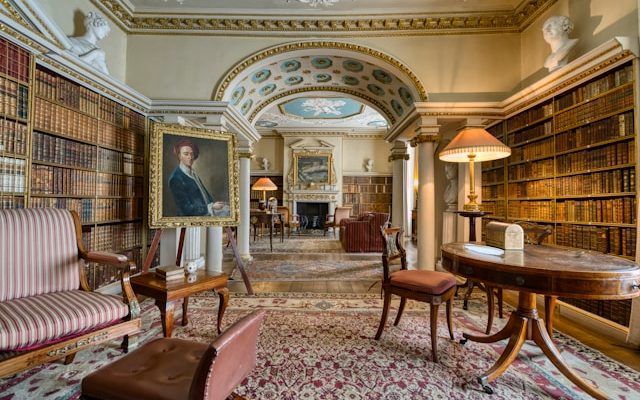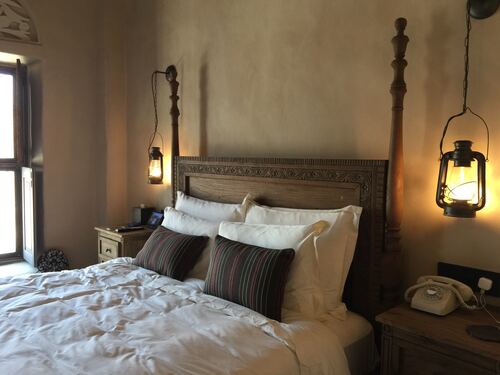Introduction to Catherine the Great’s furniture
Catherine the Incomparable, perhaps Russia’s most fascinating ruler, left an indelible legacy in legislative concerns, culture, and the area of improving emotions. Catherine, among her numerous advantages, had a particular fondness for accumulating and charging beautiful furniture. This post delves into the rich history and allure of Catherine The Great’s furniture, objects that have captivated workmanship enthusiasts and antiquarians alike.
Her collection, distinguished by plushness and magnificence, reflects both the artistic innovations of her time and her own penchant for luxurious ideas. As we delve into the nuances of her collection, you’ll see the distinctiveness of each piece and how they’ve risen above the fray to influence current design trends. We should look into the heavenly furniture that adorned the castles of probably Russia’s most outstanding pioneer.
The Historical Context of Catherine The Great’s Furniture Collection
When Catherine The Great ascended to the Russian throne in 1762, she inherited a vast territory rich in customs and treasures. Her reign, which lasted until 1796, was distinguished by a period of widespread transformation and Westernization. This century was also significant for the growth of artistic expression, which was strongly influenced by Western European sensibilities, particularly those of France and Italy.
During Catherine’s reign, Russia witnessed the introduction of a variety of innovative styles that combined local customs with Western methods and planning. The emperor was particularly fond of the opulent Extravagant and Lavish styles that dominated European craftsmanship at the time. In any event, as her rule progressed, she began to favor the cleaner lines and more controlled excellence of the Neoclassical plan, reflecting her intellectual dedication to Illumination ideas.
Catherine’s royal homes, such as the Winter Castle and Tsarskoye Selo, were stocked with tailor-made objects that reflected these designs. The furniture was typically made from expensive woods like as mahogany and ebony, trimmed with ivory, and embellished with ornate plating. These pieces were more than merely improving; they were depictions of influence, abundance, and the social desires of the Russian Domain under Catherine’s control.
Her dedication to transforming St. Petersburg into a social capital is evident in her support for both foreign and Russian experts. This period saw a surge in craftsmanship and artistic expression, fueled by Catherine’s establishment of workmanship schools and her encouragement of creative development.
This rich realistic environment allows for a better understanding of the outstanding attributes and meaning of Catherine The Great’s Furniture Collection. Each artwork tells the story of social trade, artistic growth, and regal extravagance.
The Characteristics and Styles of Catherine the Great’s Furniture
Catherine The Great’s furniture is notable for its varied design and luxurious craftsmanship, which captures the inventive styles popular throughout her reign. The furniture items reflect the rich preferences of the time, as well as Catherine’s desire to portray influence and elegance through her surroundings.
Ornate Impacts: From the start of her reign, the furniture emphasized elaborate components, which are represented by dramatic, detailed, and aggressively adorned plans. These artworks usually included intricate carvings, bended constructions, and broad overlays. They aimed to evoke awe and amazement, reflecting Catherine’s vision of her domain as a dominant societal force.
Progress to Lavish: As trends evolved, extravagant components began to appear in her collection. Lavish furniture is distinguished by its more cheerful and unconventional style, with topsy-turvy layouts, delicate bends, and lighter, more pastel color ranges. This style was less about the loftiness of the ornate and more about polish and the majesty of small, complex details.
Reception of Neoclassicism: In the latter stages of her career, Catherine embraced Neoclassicism, a style inspired by a renewed interest in the conventional specialties of ancient Greece and Rome. This style is distinguished by its simplicity, clean lines, and even planning. This period’s furniture demonstrates an unmistakable movement from the intricate Florid and Lavish styles to a more streamlined and subdued class. Marble and bronze became popular materials, with recurrent themes like as trees, lyres, and acanthus leaves.
Craftsmanship and Materials: Catherine’s furniture was of the highest quality, regardless of its style. Craftsmen used costly materials such as exotic woods, mother-of-pearl, and precious metals. Upholstery was traditionally made with the finest silks and velvets, which were usually imported from overseas. The meticulousness of the marquetry, in which pieces of facade were randomly chopped and put together to create elaborate examples, demonstrates the competence of her professional artisans.
Catherine’s furniture collection met a practical necessity while also demonstrating her societal aspirations and desire to create a lasting legacy via human expression. Each artwork was designed to dazzle and exemplify her rule’s values of force, refinement, and a deep appreciation for human expression.
Famous pieces from Catherine the Great’s furniture collection.
Catherine The Great’s Furniture collection includes a few truly notorious pieces, each with its own tale and provable value. These items reflect her personal preferences while also serving as antique rarities of her era’s social and cultural endeavors.
The Orlov Jewel High posture: Possibly the most dynamite item in her collection, this lofty posture is embellished with numerous costly stones, including the well-known Orlov precious stone. The towering position’s concept features mind-blowing gold leaf decorations and a luxurious red velvet bench, which reflect imperial authority and opulence. It remains a standout in the collection on display at the Withdrawal Exhibition Hall in St. Petersburg.
The Golden Room: Originally designed in Prussia and later passed down to Peter the Incomparable, Catherine took a special interest in completing the Golden Room’s renovation during her reign. The room’s boards are covered in a variety of Baltic gold, which is unexpectedly ordered to create intricate designs. Despite being lost during WWII, the reconstructed Golden Room in the Catherine Royal House near St. Petersburg exemplifies the richness that defined her standard.
Goods from the Greek Lobby at Tsarskoye Selo: The Greek Corridor, which reflects her turn toward Neoclassicism, is filled with furniture that symbolizes the style’s clean lines and classical themes. This has mahogany seats with lyre-shaped backs and marble-topped tables supported by cut caryatids. These writings highlight her admiration for ancient human achievements and her desire to adapt Russia to Western European social norms.
Individual Writing Desk: Catherine’s writing desk, known for her communication with a substantial number of the most astute persons of her time, is an excellent example of ornate furniture. It has elegantly cut wood, plated accents, and concealed chambers for her personal messages and reports.
Her State Bed during the colder season The Royal Residence: Catherine’s state bed was a lavish masterpiece that showcased cut brilliant figures, a weighted silk curtain, and an extravagantly enhanced shelter. This sculpture was intended to pique the interest of visiting dignitaries while also reflecting her position as a strong ruler.
These artifacts, which are both furniture and antiquities, provide insight into Catherine the Incomparable’s life and times. Everything tells a story about the social movements, private tastes, and political yearnings of possibly Russia’s most captivating ruler.
Influence of Catherine the Great’s Furniture on Modern Designs
Catherine the Incomparable’s influence on furniture design extends far beyond her lifetime and the confines of her realm. Her taste and support have left an indelible mark on interior design and furniture manufacturing, which continues to influence current trends.
Reconciliation of Old Style Components: One of Catherine’s most significant contributions to furniture design is her promotion of Neoclassicism. This style, defined by its simplicity, balance, and consolidation of traditional ideas, has influenced modern furniture design. Today, many architects incorporate Neoclassical elements, such as sections, pilasters, and Greek key examples, into contemporary pieces, blending tradition with modernity.
Extravagance and Plushness: Catherine’s fondness for opulent materials and lavish ornamentation has infused current luxury furniture businesses. These manufacturers commonly use similar materials, such as decorated wood, plated metals, and rich upholstery, to give a sense of opulence and exclusivity. Her influence is visible in pieces that emphasize elaborate detailing and the use of high-quality materials, catering to the current affluent customer market.
Catherine was well-known for her collaborative efforts with notable specialists and skilled workers of her period, kicking off a tradition of innovators collaborating with artisans. This interdisciplinary approach has become a hallmark in the high-end furniture market, where unique, limited-edition items are created through collaborative efforts between furniture designers and artisans.
Protecting and Restoration: Catherine’s commitment to collecting and preserving furniture emphasizes current trends in antique collection as well as the recovery of authentic styles. Her passion for the past has resulted in a consistent premium in antique markets and the resurgence of one-of-a-kind furniture, which is highly sought for its verifiable and stylish value.
Instructive Impact: Finally, Catherine’s foundation of craftsmanship schools and support for craftsmanship has found resonance in modern plan training, where history and strategy are taught as vital components of the educational curriculum. This ensures that new generations of architects receive the skills and knowledge required to create high-quality furniture.
Catherine The Great’s Furniture completed her royal mansions while also establishing principles and patterns that have influenced modern furniture design over hundreds of years. Her class and outstanding taste continue to inspire both enthusiasm for authentic styles and the creation of new ones.
Preserving Catherine the Great’s Furniture: Efforts and Challenges.
The preservation of Catherine The Great’s Furniture entails meticulous efforts to maintain the reliability and elegance of these authentic pieces. The cycle is about more than just maintaining the appearance; it is also about ensuring that the true significance and stories behind everything are preserved for future generations.
Preservation Methods: Protecting antique furniture, such as Catherine The Great’s Furniture Incomparable, entails several unique processes. Restorers should meticulously perfect and repair sensitive materials without altering the original craftsmanship. Infrared reflectography, bright light assessment, and X-beam fluorescence are used to analyze the original materials and procedures, allowing conservators to conduct precise reconstruction attempts.
Natural Difficulties: One of the most difficult challenges in preserving antique furniture is managing the environment in which it is stored. Temperature, stickiness, and light openness are all factors that should be carefully considered to prevent weakening. Historical centers and collections that house Catherine’s furniture use advanced environmental control systems to provide the optimal environment for protecting these valuable artifacts.
Subsidizing and Mastery: Security activities necessitate specific knowledge as well as substantial funding. Obtaining financial assistance for furthering preservation efforts can be difficult. Furthermore, training new professionals in the specific skills required for furniture conservation ensures that the knowledge and methods developed over hundreds of years are not lost.
Public Commitment and Training: Educating the general public about the importance of safety is vital for the continued success of these efforts. Galleries and authentic locations frequently organize demonstrations and educational projects to highlight the process of furniture preservation, emphasizing the craftsmanship of the past and its value today.
Conservation examples of overcoming adversity: The reconstruction of the Golden Room, which was recreated from images and memories after being lost during WWII, is an outstanding step toward preserving Catherine’s heritage. This endeavor stands as a testament to the dedication of conservators and history students to preserving social legacy.
Protecting Catherine The Great’s Furniture is a never-ending journey that encompasses severe challenges but also gives precious rewards such as preserved history and continued inspiration from her historic collection.
CONCLUSION
Catherine The Great’s Furniture is more than just a collection of historical items. It is an active aspect of cultural legacy that continues to impact aesthetics, craftsmanship, and design. Her collection’s enduring appeal stems from its capacity to tell the story of a great ruler’s vision as well as her influence on the arts and culture of her period.
Today, her furniture entices not only academics and art lovers, but also modern designers and collectors. Catherine’s furniture collection leaves a legacy that reminds us of the power of artistic expression and the need of preserving it for future generations.
As we consider the splendor of Catherine The Great’s Furniture, it is apparent that her impact goes well beyond Russia’s palaces, extending into the present world of design and continuing to fascinate the imaginations of everyone who value beauty and history.




